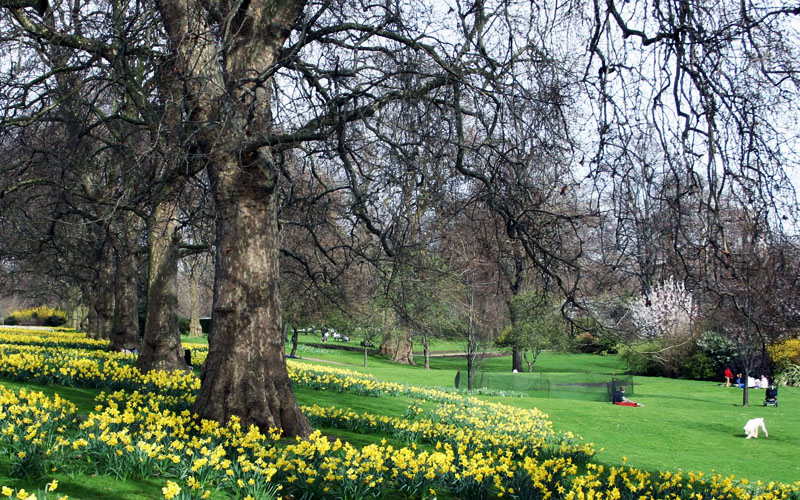Nigel Reeve, Head of Ecology, The Royal Parks

St James Park. © Nigel Reeve
The end of March 2013 marked the fifth anniversary of the fruitful partnership between The Royal Parks and GiGL. Our partnership began in 2007 with the appointment of Ian Woodward as the first GiGL Royal Parks Officer. Ian got the records system up and running before moving on to do an MSc. He was succeeded in October 2008 by Claudia Watts who is still in post. This role is the main element of a contract in which GiGL provides a bespoke service to support and develop The Royal Parks’ biological recording and ecological information system.
The Royal Parks manages eight historic parklands in London, covering over 2,000 hectares, as well as the Longford River and several other green spaces including Brompton Cemetery and Victoria Tower Gardens. Although heavily used by the public, with an estimated total of 37 million visitors each year, all our parks are of recognised nature conservation importance. Richmond Park, London’s largest National Nature Reserve, is a Site of Special Scientific Interest and a European Special Area of Conservation. Bushy Park is another outstanding wildlife site and, thanks largely to the survey data we have obtained since 2004, is currently being considered for notification as a SSSI by Natural England.
To ensure we have access to the information we need to manage our sites sensitively we need a robust information system. To achieve this, we have matched the software and data structures used at GiGL. We run Recorder 6 and MapInfo GIS as well as keeping a metadatabase to catalogue our known historic and current data sources.
Claudia works within The Royal Parks’ Ecology Unit alongside Samantha Wilkinson, our Ecology Officer, and myself. She is responsible for maintaining the information system and progressing its development. She processes data and provides reports and maps for use by the Parks’ Ecology Unit, other staff and Royal Park volunteers as well as external customers such as project partners and contractors. She mentors our system users and liaises with our IT staff to keep the system updated and functional. Recent data are prioritised for entry and historic data are entered when there is time or a specific need.
Datasets are exchanged quarterly with GiGL and, as a partner, we have access to the third party records held in their database. These include those provided by societies like the London Natural History Society or those coming via the National Biodiversity Network (NBN). This is of huge benefit to us, as site managers like The Royal Parks are often left out of the loop when data go directly into other recording schemes, leaving us unaware of important finds. The benefits work both ways. We can be sure that our records will reach the NBN and other GiGL partners, such as Natural England, the London Wildlife Trust, the GLA and local authorities while other GiGL partners can, within the terms of our data use agreement, make direct use of our data at full resolution, smoothing the flow of data between organisations.
In The Royal Parks, we receive regular data from our wonderful volunteer recorders who participate in systematic surveys of flora and fauna, including standard walks for birds and butterflies. Volunteers and staff also send in records of ad hoc sightings. Over the years we have commissioned professional surveys of fungi, invertebrates and soil, amongst others, as opportunities and needs have arisen. Plant community maps of at least Phase 1 level are available for all our sites and where semi-natural communities are found the National Vegetation Classifications of those communities are also mapped. Re-surveys every few years are needed to keep data current and to monitor change. So far, the vegetation maps of three of our parks have been updated – allowing us to monitor, for example, improvements in acid grassland quality and an increase in the extent of bracken cover in Richmond and Bushy Parks. Our arboricultural team also continuously captures tree data using a specialist management database (Arbortrack) and these data are now regularly updated and incorporated into our records system.
Our partnership with GiGL has ensured that we now have an up to date and well-populated records system that is capable of managing all our species, habitat and environmental data. We currently have around a quarter of a million records of more than 5,148 species throughout the Royal Parks, of which 418 are species of conservation importance. Just knowing this is evidence of a major step forward.
We can anticipate many more such steps. For example, we are close to implementing a user-friendly web portal for Royal Parks staff and volunteers to enter occasional records via The Royal Parks/GiGL websites. This is just one of the many good things becoming possible through our work with GiGL.
